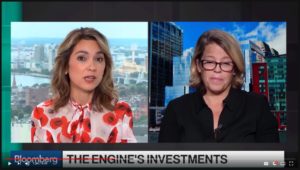

What Happens To Transformational Technologies Like Fusion When Even Governments Say It Will Take Too Long To Develop? The short video below explains how technology that can fundamentally change the world through things like limitless energy is something that few investors or even governments want to fund.
In this world of short-termism in which elected officials can only see to the next election and CEO’s are only concerned about the next three quarters, there are some who are willing to invest in the long view.


Fast forward 30 years and we find that when the large venture capitalists and governments bail out there are some who will risk it all to change the world:
The research was summarily condemned, and cold fusion became a synonym for junk science. … The field of cold fusion was rebranded as low-energy nuclear reactions, or LENR, and survives.
“LENR is real experimentally, and not understood theoretically,” says David J. Nagel, an electrical and computer engineering professor at George Washington University and a former research manager at the Naval Research Laboratory. “There are results that you just can’t explain away. Whether it’s cold fusion, low-energy nuclear reactions, or something else—the names are all over the place—we still don’t know. But there’s no doubt that you can trigger nuclear reactions using chemical energy.”
…Researchers have reported such electrochemical systems that can output more than 25 times as much energy as they draw.
…Nagel says the LENR field continues to grow internationally, and the biggest hurdles remain inconsistent results and lack of funding.
SOURCE
…While C-Mod (at MIT) achieved the highest magnetic field and plasma pressure of any fusion device of its type, the federal government’s priorities were elsewhere, and they decided to pull funding from the experiment. “It was proposed to go from $25 million a year to zero,” says (CEO) Mumgaard. “It was super disruptive.” The disruption was disappointing to PSFC, it also created an unexpected opportunity. … In early 2016… “Some people scoffed at the idea of private funding, while others grasped it immediately. After the talk the halls were abuzz with scientists talking about ‘risk retirement’ and ‘minimally viable product’, phrases outside the vocabulary of most academics.”…
SOURCE
If this so called “Tough Tech” does work out the rewards for the very few long tailed venture capitalists that do invest like Boston based “The Engine” will be massive.
This website uses cookies.
View Comments
thanks for the update on the Cold Fusion stuff here